The Andyson Platinum R 1200W PSU Review
by E. Fylladitakis on April 24, 2015 8:00 AM EST- Posted in
- Cases/Cooling/PSUs
- 1200W
- 80Plus Platinum
- Andyson
Cold Test Results
For the testing of PSUs, we are using high precision electronic loads with a maximum power draw of 2700 Watts, a Rigol DS5042M 40 MHz oscilloscope, an Extech 380803 power analyzer, two high precision UNI-T UT-325 digital thermometers, an Extech HD600 SPL meter, a self-designed hotbox and various other bits and parts. For a thorough explanation of our testing methodology and more details on our equipment, please refer to our How We Test PSUs - 2014 Pipeline post.
Note: As the Andyson Platinum R 1200W cannot follow the test protocol guidelines without overloading its 3.3V/5V lines, the load derating factor DV of these two lines is being reduced to 50%. To explain why, we will be putting up a pipeline post shortly to explain the matter, as it applies to several other units.
Even if its low load efficiency is not much to look at, the Andyson Platinum R 1200W meets the 80Plus Platinum certification requirements with ease. It manages a maximum conversion efficiency of 94.2% at 40% load and an average of 92.8% within the nominal load range (20% to 100% of the unit's capacity). When the load is reduced below 20%, the efficiency plummets, dropping to 81.7% at 10% load and further down to just 74.7% at 5% load. This was to be expected, as this is how SMPS PSUs operate. A 5% of a unit this powerful corresponds to an output of 60W, ample to power a modern system while it is idling, so higher low-load efficiency would be more than welcome.
Due to the very high efficiency and the presence of adequately sized heatsinks, the Andyson Platinum R 1200W maintains very low internal temperatures without overworking its cooling fan. The temperature of the heatsinks barely surpassed 65°C under maximum load, when 100 Amperes were flowing from the transformer to the distribution PCB. The cooling fan displays a "stepping" behavior, staying entirely quiet up to 40% load and then stepping up each time that the load increases. Even with a load of 1kW, the noise levels are tolerable for daily use, with the fan pushing the borders of comfort only at maximum load.


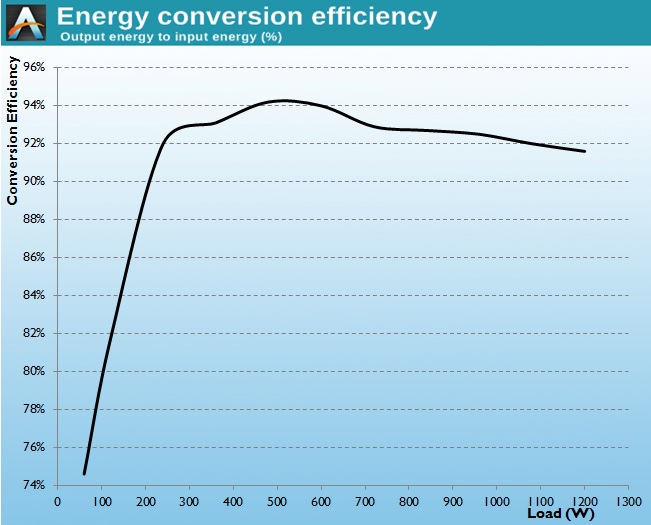
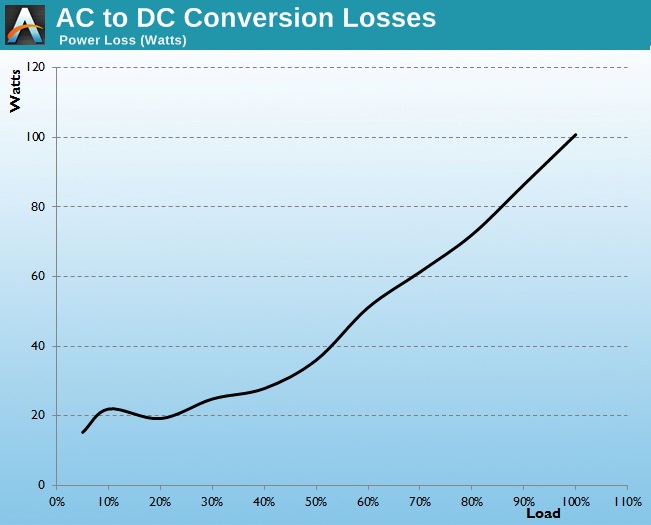
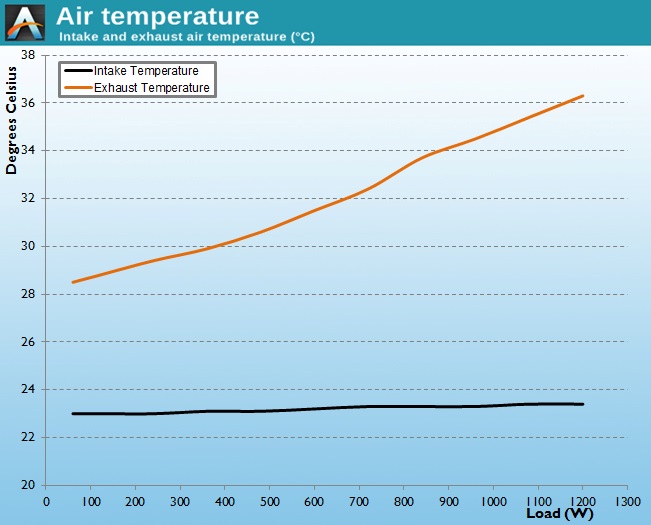
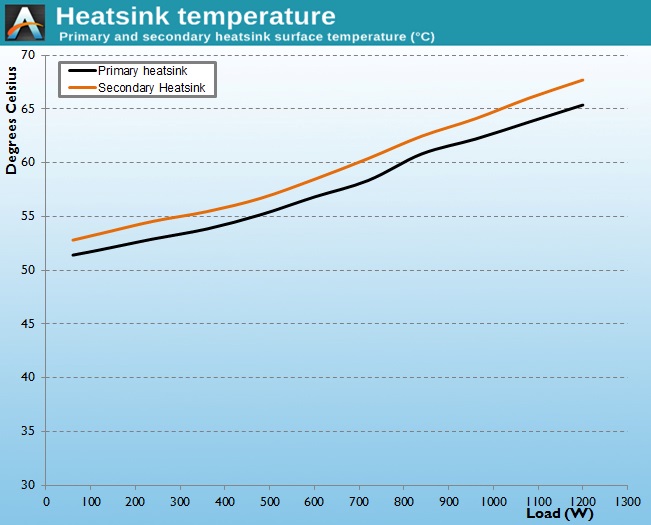
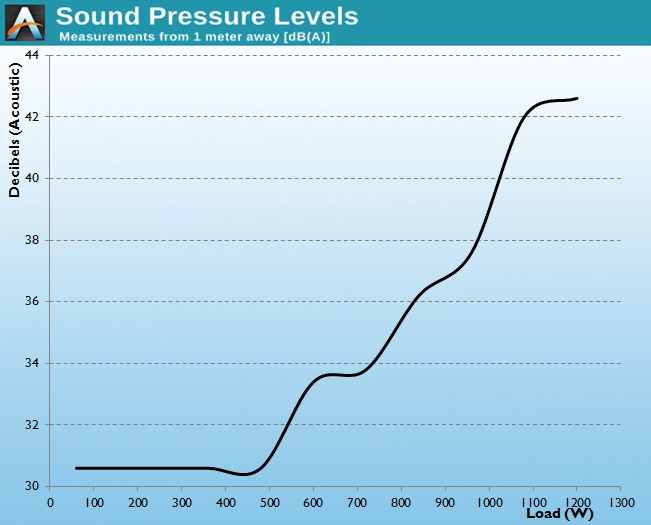








46 Comments
View All Comments
ImSpartacus - Saturday, April 25, 2015 - link
I agree.I couldn't care less about giant PSUs.
I want to see reviews of ~500W PSUs because that's the kind of PSU that I would buy.
E.Fyll - Monday, April 27, 2015 - link
You see, the problem is that good <550 Watts PSUs are very rare. In the order of $50, you will get something that works OK and that's about it. Will it really matter if the ripple is 90mV instead of 75mV, or if the average efficiency is 95% instead of 95.3%?Besides,manufacturers do not easily supply samples of such products. I've already discussed the reasons why not many times over. The few good low power units that exist, I am trying to source them. Silver stone sent in a 450 watt unit and we might be getting somewhere with Andyson too.
And no, I cannot just buy the samples. Especially from newegg.
The0ne - Saturday, April 25, 2015 - link
They won't listen lol, it's like they're being paid to do the article...wait a minute, I may be on to something!ImSpartacus - Saturday, April 25, 2015 - link
Yeah, the author says it up front:"When it comes to high performance >1 kW computer power supplies, almost every reputable OEM has released at least one design to serve as their flagship. This is not necessarily because the companies expect high revenue because they are well aware that this segment of the market is very small and overly saturated. They do this because the flagship serves as a symbol of the company's capabilities and competence, enhancing their profile on all fronts in order to produce that halo product, hoping the performance of the high end results in trickle-down sales."
But that doesn't justify it. The bottom line is that I read Anandtech reviews because I want to be educated about potential purchases. However, I'll never purchase a 1000+W PSU. That's just wasteful.
I want relevant reviews and Anandtech needs to demands relevant PSU review units.
JonnyDough - Tuesday, April 28, 2015 - link
Agreed. I own 10 computers, 8 of which are gaming PCs. None have more than a 750w PSU in them, and none will ever need to.computex128 - Wednesday, April 29, 2015 - link
Drop the insanity and buy a dual-GPU card like the rest of us certifiably sane folk :PLoneWolf15 - Friday, April 24, 2015 - link
Andyson didn't just suffer because of Hiper.Remember Ultra power supplies? First modular units made, now house brand of Tiger Direct? Andyson. Many failures, old designs, horrible voltage regulation, never meeting load specs....that's a lot of Andyson PSUs made for the vendors they supply to. While it could be that vendors want Andyson to make cheap units, I wouldn't touch one, even one that rates well. You can do better with other choices.
DanNeely - Friday, April 24, 2015 - link
Thank you for updating your testing methodology to reflect the continued decline in the amount of power available on the legacy (3.3/5v) rails in more modern designs.Laststop311 - Saturday, April 25, 2015 - link
Because legacy systems used lower voltage more. Nowadays everything is 12 volts.CrazyElf - Friday, April 24, 2015 - link
The most important things to consider are:1. Voltage regulation under load
2. Ripple suppression
3. Long term reliability
I would ignore the 80 Plus as it's mostly marketing.
Good power supplies are made by Delta (OEM), Super Flower (their Leadex platform is pretty good), Seasonic, and I would argue some of the Flextronics designs are pretty good too. Brand is mostly for warranty support - it's the OEM that really counts.